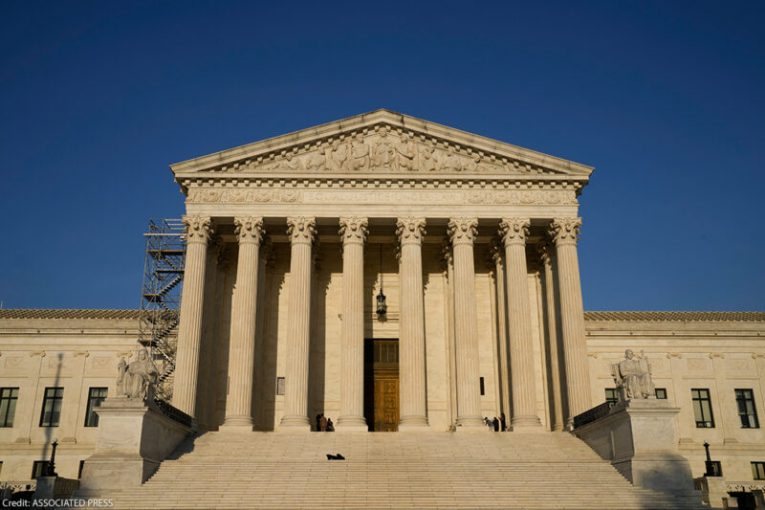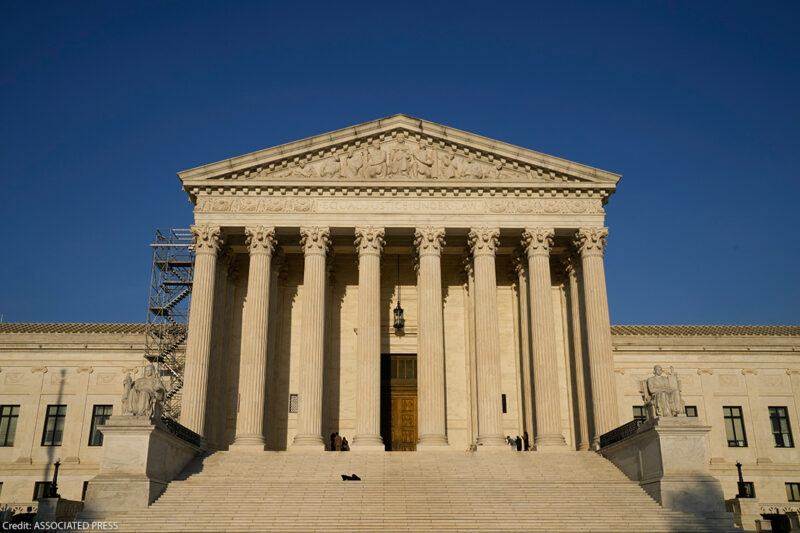

The outcome of a case before the Supreme Court could have grave implications for protest, advocacy, and expression.
By Laura Moraff
The internet is full of strong, impassioned, sometimes offensive language. In response to an activist’s post about being choked by a sheriff’s deputy, someone posted to Facebook, “Wow, brother they wanna hit our general. It’s time to strike back. Let’s burn this motherfucker’s house down.” And someone listening to music posted lyrics about “student bodies lying dead in the halls, a blood splattered treatise of hate.”
While this speech might be offensive — or even feel threatening — to some people, to others it is an expression of a political opinion, an unfiltered reaction to a recent event, or an attempt to rally support for a cause. The freedom to share provocative ideas and spark robust debate about political issues is essential to democracy, social justice, and progress. Our right to free speech generally protects such communications.
However, “true threats” are not protected by the First Amendment. The government can prosecute someone who  intentionally threatens another person with death or serious bodily harm, and whose language is reasonably perceived as threatening. But can a speaker be convicted of making a true threat solely because some people could reasonably perceive it as threatening, regardless of the speaker’s intent? That’s the question before the Supreme Court in Counterman v. Colorado.
intentionally threatens another person with death or serious bodily harm, and whose language is reasonably perceived as threatening. But can a speaker be convicted of making a true threat solely because some people could reasonably perceive it as threatening, regardless of the speaker’s intent? That’s the question before the Supreme Court in Counterman v. Colorado.
The ACLU and its coalition partners filed an amicus brief arguing that the First Amendment requires “subjective intent to threaten” as a necessary element of a true threat. In other words, to meet the legal threshold for a “true threat,” the speaker’s own intent must be taken into account. This would allow a jury to consider the speaker’s state of mind when the threat was made, and ensure that speakers aren’t criminally convicted for failures to predict how people might interpret their speech.
If a person could be convicted for any statement that could reasonably be perceived as threatening, regardless of whether they understood or intended the speech to be threatening, people would need to constantly monitor and tailor their speech to avoid potentially sparking fear in anyone who might foreseeably hear or read it. When people post on social media platforms, they would have to accurately predict how people with vastly different life experiences and perspectives might view their speech, or risk criminal prosecution.
Consider the Facebook poster saying “Let’s burn this motherfucker’s house down.” Some might reasonably believe the poster will set fire to the target’s house. But if the poster intended only to hyperbolically express outrage over an injustice, their speech shouldn’t be labeled as an unprotected “true threat.” Or consider a politician who says that if her opponent is elected, people might resort to “Second Amendment remedies.” Some might reasonably interpret her language as a threat to her opponent’s life, even if she intended it only as an appeal for votes.
Charged speech, however, is not an internet-era phenomenon. In 1969, a racial justice activist organizing a boycott of white-owned businesses spoke to a crowd of several hundred people and said, “If we catch any of you going in any of them racist stores, we’re gonna break your damn neck.” Today, an activist might tweet the same, intending only to garner solidarity. To criminally charge that person would silence them and chill those who similarly advocate for change.
Of course, even unintentionally threatening language can cause real harm. In Counterman v. Colorado, Billy Raymond Counterman sent C.W., a Colorado musician, a series of direct Facebook messages over a two-year period that made C.W. wonder if he was following her. Counterman, who is mentally ill, sent C.W. messages like “Was that you in the white Jeep?” and “I’d like to talk directly to U, I feel neglected” and “five years on FB. I miss you, only a couple physical sightings.” C.W. didn’t respond and blocked Counterman multiple times. Each time Counterman would create a new account and message C.W. again, saying, for example: “Your arrogance offends existence of anyone in my position” and “Your not being good for human relations. Die, don’t need you.” C.W. obtained a protective order and canceled some of her performances out of fear that Counterman might attend.
C.W., like many people who have been sent frightening messages online, reasonably feared for her safety. In addition to posing safety concerns, threatening language is often misogynistic, racist, or homophobic. This kind of speech causes real emotional and psychological harm. Victims, fearful of more abuse, often self-censor, leaving online spaces that once brought community and well-being.
It is essential for the government to vigorously enforce restrictions on unlawful conduct, such as prohibitions on stalking and harassment, as well as restraining order violations. But expanding the definition of “true threats” to cover speech that was never intended to threaten brings its own dangers. For example, movements for gender and racial justice often use heated rhetoric to rally support. If this speech is misunderstood as threatening and marked as a “true threat,” then activists would have to choose between risking conviction every time they say something that could be misinterpreted, and self-censoring. The fight for progress will slowly find itself silenced out of fear. This expansion could also impinge the freedom of the press. A broader legal definition of a “true threat” could come to encompass and stifle basic functions of journalism — from quoting people who hold offensive views, to publishing political cartoons, to pressing a reluctant source for comment.
As the ACLU explains in our brief, a subjective intent to threaten requirement is necessary to protect speakers from being convicted of a felony simply because someone scrolling Twitter, with a different perspective and different background, might reasonably perceive their language as threatening. We hope the court will recognize the implications of its decision for advocates, protestors, and journalists, and preserve the right to speak without fear of conviction for unintentionally threatening speech.
Laura Moraff, Brennan Fellow, ACLU Speech, Privacy, and Technology Project





